
Pompano - 10-17-2009 at 07:04 AM
Anyone driving The Baja Road has seen Baja cattle.
Mostly standing very close to your lane.. grazing on fresh growth. You flash by one and your wife says, "Was that a COW you almost just hit?"
You turn to smile knowingly at her, "That was not just ANY cow, that was a special breed of cow called a..."
....then plow head on into the other one walking onto the pavement.
.

.
.
Ever wonder what kind of cattle most of these are?
CLUE: they are not Holstiens, Jerseys, or Angus.
Almost all are "Corriente" or a more Baja-related name, "Chinampo."
The Corriente can be traced back to the first cattle brought to the new world by the Spanish as early as 1493. These cattle were hardy breeds chosen
especially to withstand the ocean crossing and adapt to their new land. They were brought to the West Indies and south Florida, as well as to Central
and South America.
Over the centuries the descendants of these cattle bred for different purposes - milk, meat and draft animals. They also adapted through natural
selection to the various regions in which they lived. Eventually, their descendants spread across the southern U.S. and up the coast of California.
In the early 1800's, European and other breeds were introduced to the new world, and by the 1900's many ranchers in the Americas were upgrading their
herds with modern beef cattle. Nearly pure descendants of the original Spanish cattle almost disappeared, but some managed to survive with little
human care or intervention in remote areas of Central and South America, and in very limited numbers in some areas of the southern U.S. and Mexico.
Today there is evidence of a worldwide growing interest in preserving various strains of these hardy, native cattle. Cattle associations in Spain,
South America and Florida are making efforts to recognize their attributes.
In particular is this organization: N.A.C.A. = The North American Corriente Association - was established in 1982 to promote and
preserve the Corriente breed in the U.S. and Canada. With the original Spanish cattle - brought to Mexico as early as the 16th centruy - becoming
muddied through "upgrading" and indiscriminate cross-breeding, the pure Corriente was in danger of becoming extinct.
A small group of interested ranchers agreed to join forces to perpetuate the breed in North America by forming an association. The motivating force
came from the difficulty they themselves had finding good , healthy Mexican steers of traditional Corriente type to rope, bulldog, and dodge Baja
motorists. They were soon joined by others with the same motivations, and by those interested in preserving the breed for its' many other attributes.
The Name "Corriente": In Central and South America, the various descendants of the early Spanish cattle are generally referred to as
"Criollo." In parts of northern Mexico, they are often called "Corriente," although this term is frequently used for any small cattle of
indiscriminate breeding.
"Corriente" became the most common term used at the border to refer to the cattle purchased for rodeo use. Consequently, most North American
cattlemen, ropers and doggers know this name.
Descendants of the original Spanish cattle, little influenced by modern breeds, are now seen only in the remote parts of the country. These are
generally known as Criollo cattle, although in the state of Sonora the term Corriente is more common, and in Baja California the word Chinampo
is used.
All these terms, meaning "common cattle" or "cattle of the country" are applied to more or less pure descendants of the Spanish cattle, as well as to
the indiscriminate mixtures of these and more recently introduced breeds.
.
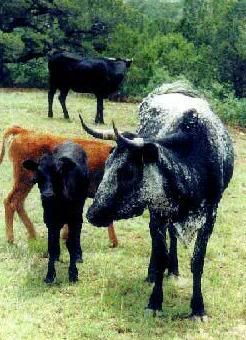
.
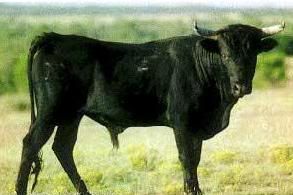
.
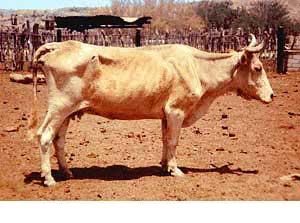
In Florida, the few remaining small, native cattle - cousins of the Mexican Corriente are called Scrub cattle or Cracker cattle, and similar cattle in
Louisiana are called Swamp cattle. Maybe Cypress can confirm the Louisiana name?
Regardless of the name, the *N.A.C.A. has made great inroads toward defining, describing and preserving these cattle as a specific breed.
.
BAJA NOMAD QUIZ TIME:
Okay, the above Baja cattle we now know are called Corriente or CHINAMPO.
But, here is a photo of another Baja cow I took a while back. Obviously different than the others....
.. WhAT BREED do you guess it to be?
.
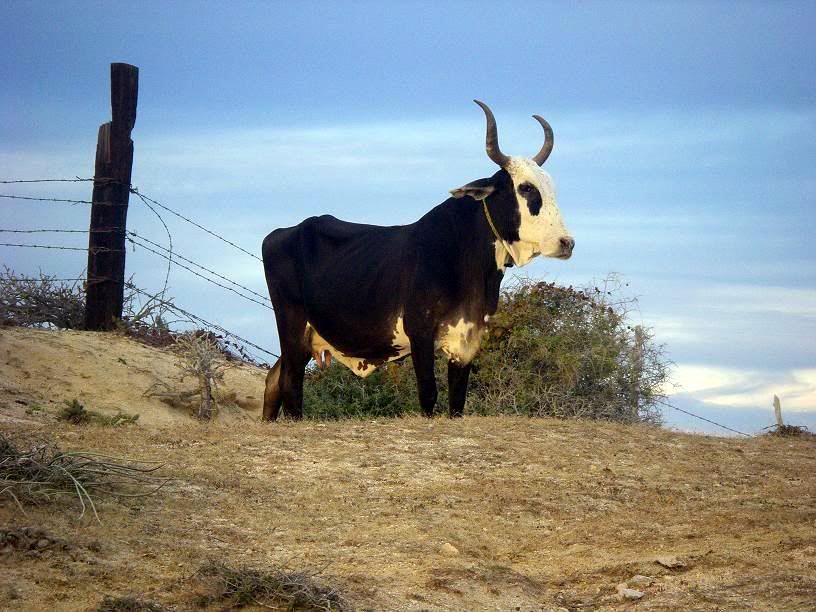
.
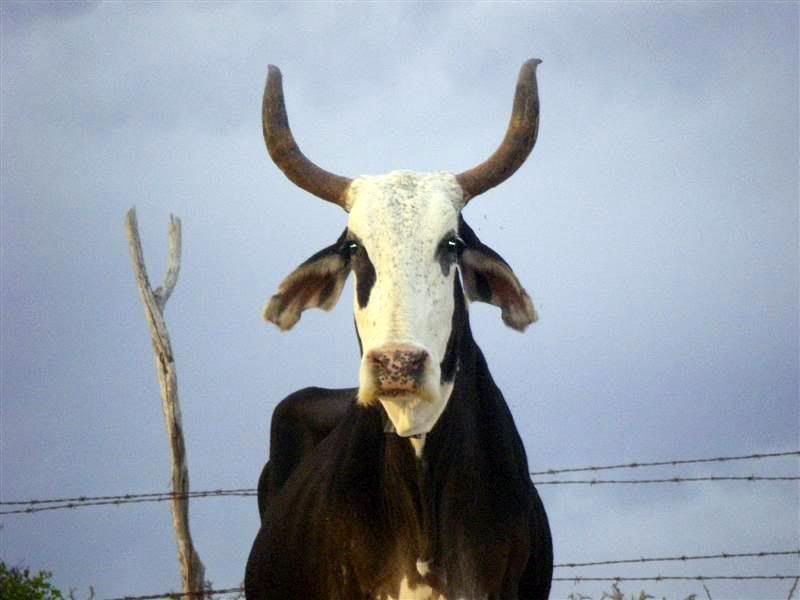
fdt - 10-17-2009 at 08:15 AM
Criollo tropical
Criollo muerto...muy muerto
bajajudy - 10-17-2009 at 08:44 AM

Iflyfish - 10-17-2009 at 08:46 AM
Brahma cross.
Iflyfish
bill erhardt - 10-17-2009 at 07:13 PM
Good stuff, Pomp.
What Cattle Breed?
Pompano - 10-18-2009 at 06:03 AM
Certainly looks a little Brahman, doesn't she, iflyfish? But..no.
Good deductional reasoning, fdt. This breed comes from a hot climate.
Judy...nice skeleton photo. However, my cow still has a little meat on it's frame.
My Baja cow:
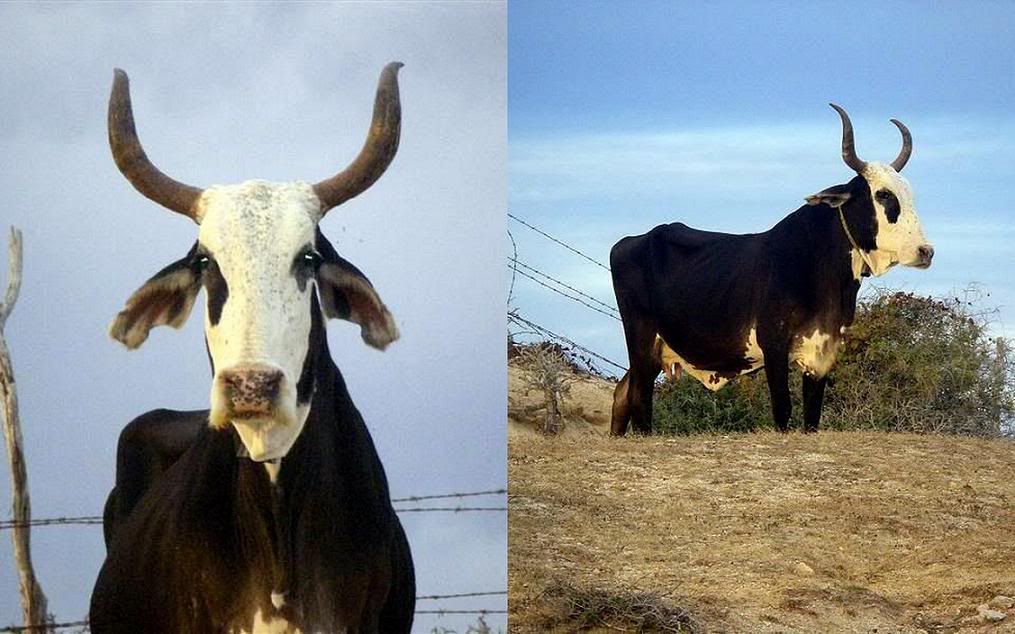
.
Some resemblances... breeds from around the world:
Guzerat
.
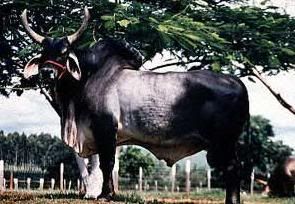
.
Kandrej
.
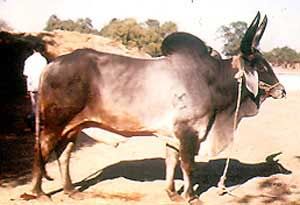
.
Krishnavalley
.
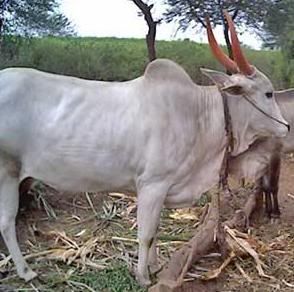
.
Madagascarzebu
.
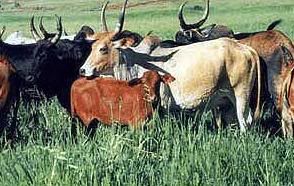
Lots of similarities there.
Anyone care to hazard a guess..or do you know the answer?
Howard - 10-18-2009 at 06:46 AM
It is the very rare T/boneses/Porterhouseses. They are actually quite common in California at all Costco's.
The female version is the Chocolates Milkes.
Thank you for the very mooo-ving pictures.
Any other questions that I can help with?
fdt - 10-18-2009 at 07:37 AM
Don't see a hump on your cow.
capt. mike - 10-18-2009 at 09:20 AM
why is Sonoran beef the juiciest and most tender flavorful meat i have ever tasted??
why can't we find it as imported product labeled as such in our stores?
bummer....
Chinampo Cattle-most likely NOT...
Baja Bucko - 10-18-2009 at 09:52 AM
I have to disagree with you abt these Baja cattle being Chinampo.
A few years back while I was searching for the last of the Californio horses-meaning the last of the descendents of the Spanish horses I also asked
around Baja Sur for the Spanish Cattle. My requests circulated among various old families of Baja-ranching families then and still and familias
antiguas.
All information I recved said that the chinampo was gone-no longer existing. Lots of other breed influx but no Spanish cattle.
Sad to say so is the last of the Californio horses after the last 13 or so surviving OLD Villavicencio horses died abt 10 yrs ago-and me still hauling
around the tubes to get blood from them for the Rare Breeds horse project (DNA analysis).
I may be wrong abt the cattle but the people who I had contact with one way or another were pretty reliable sources-and I did spend a few years
"looking".
Chinampos? No-Brahman and others? you betcha as many many stockman have been bringing in top bulls from the mainland and the US for years.
Paula - 10-18-2009 at 10:03 AM
Any but the one at the top of the page can come hang on out lot. They'd really add to the ambiance!
vandenberg - 10-18-2009 at 10:39 AM
They all show a lot of similarities to our golfcourse cattle.
Cypress - 10-18-2009 at 11:31 AM
Pompano, Sadly there's no longer any "open range" down south, swamp or otherwise. They do raise Corriente for roping, call 'em "roping steers".
Skipjack Joe - 10-18-2009 at 09:22 PM
We nicknamed this one - amorcito

Pompano - 10-19-2009 at 02:46 AM
Ouch! Igor, are those cholla sticking to that face? Unfortunately an occupational hazard for the chinampo desert wanderers.
Amorcito .. Armor-cito maybe?
vandenburg...I like your new breed name...'golfcourse' cattle. Goes with the new face of Loreto. Does that course down your way actually have ANY
edible plants left for these guys?
Cypress...more's the pity for the South. You must come Up North for the last Open Range. Not too many southern breeds up there though..winters are
way too severe...think Beefalo.
I recall hearing from an old rancher, Bonafacio Diaz of Rcho Coyote, that Loreto at one time was a major shipping port for beef from Baja. Bonafacio
also said that rainfall in Baja was better up to the late 50's..and graze was plentiful enough for bigger herds of the criollo/chinampo.
Paula, you have an eye for beauty and ambiance. They are rather photogenic, aren't they?
Steakwise: Guys, Sonora beef is okay in a pinch, but just does not compare to homegrown beef near Ashley, ND. 
.

.

Cyanide41 - 10-19-2009 at 10:08 AM
Does a cow even notice cholla?
Frank - 10-19-2009 at 03:34 PM
I have no idea what breed they are. But here are my cow pics.
Moooving down the highway and leaving skid marks.

If you wait long enough, the shot will come.

bajalera - 10-19-2009 at 07:13 PM
Interesting text, Pompano. and great photos, everybody.
Brahmangus?

















